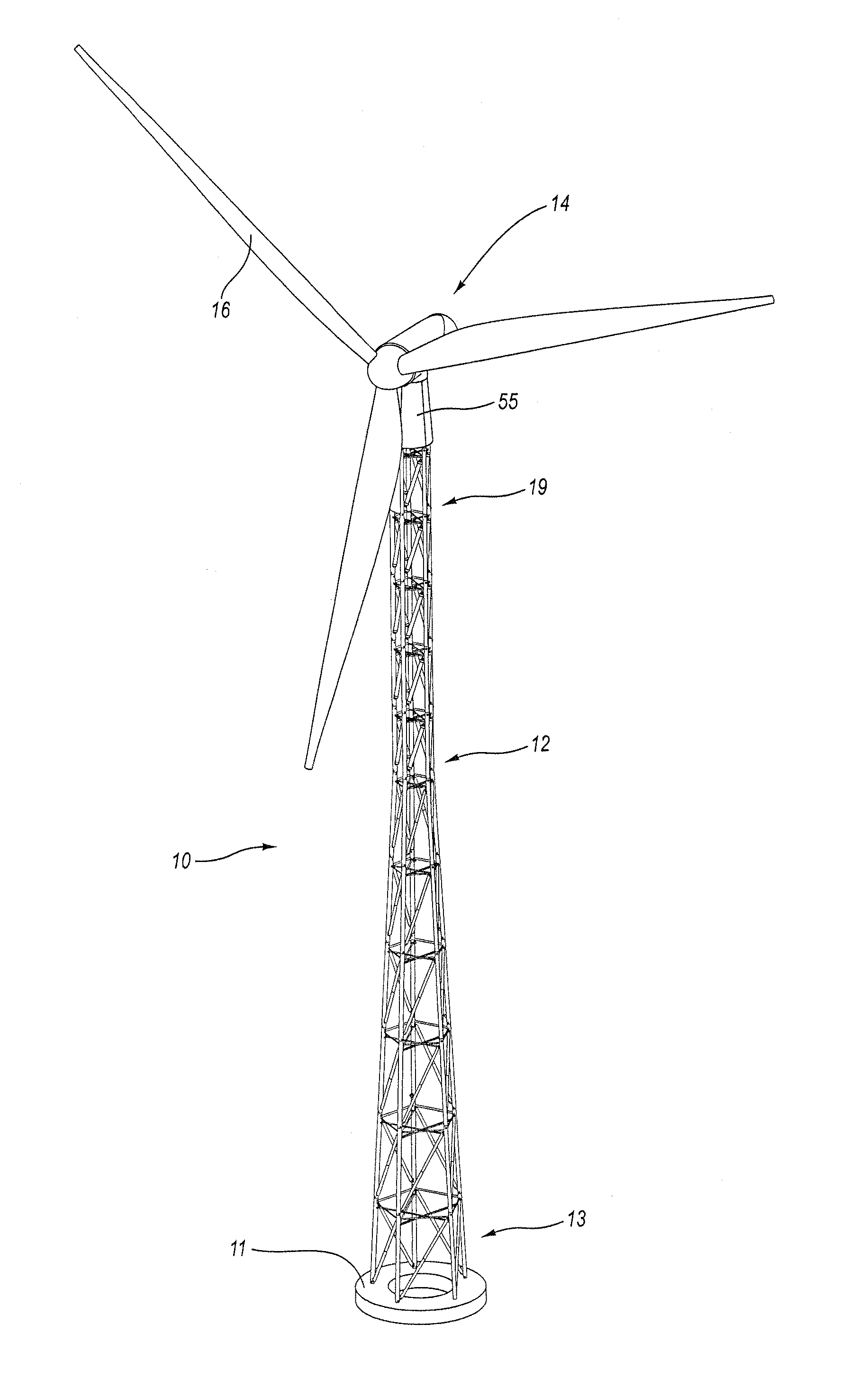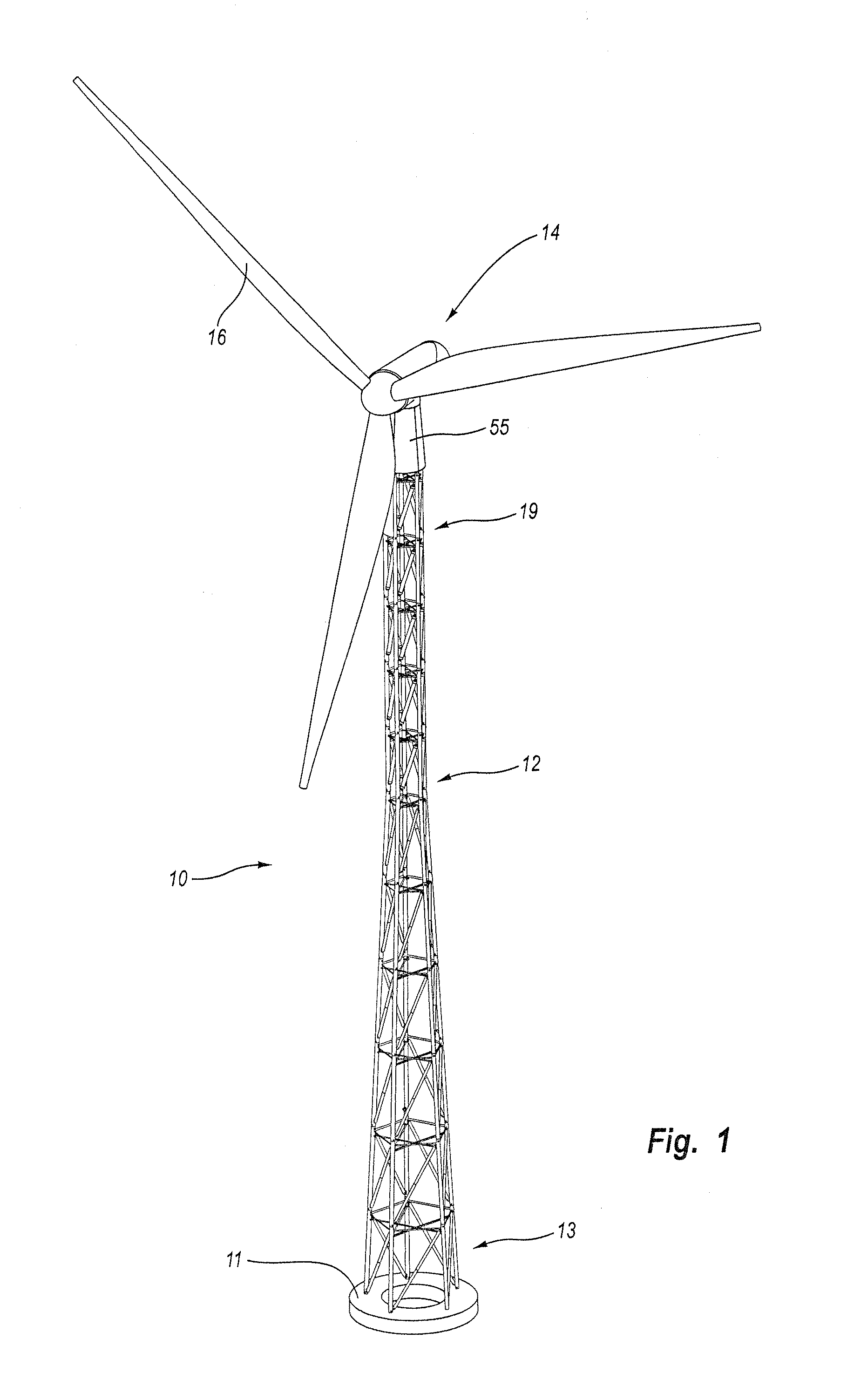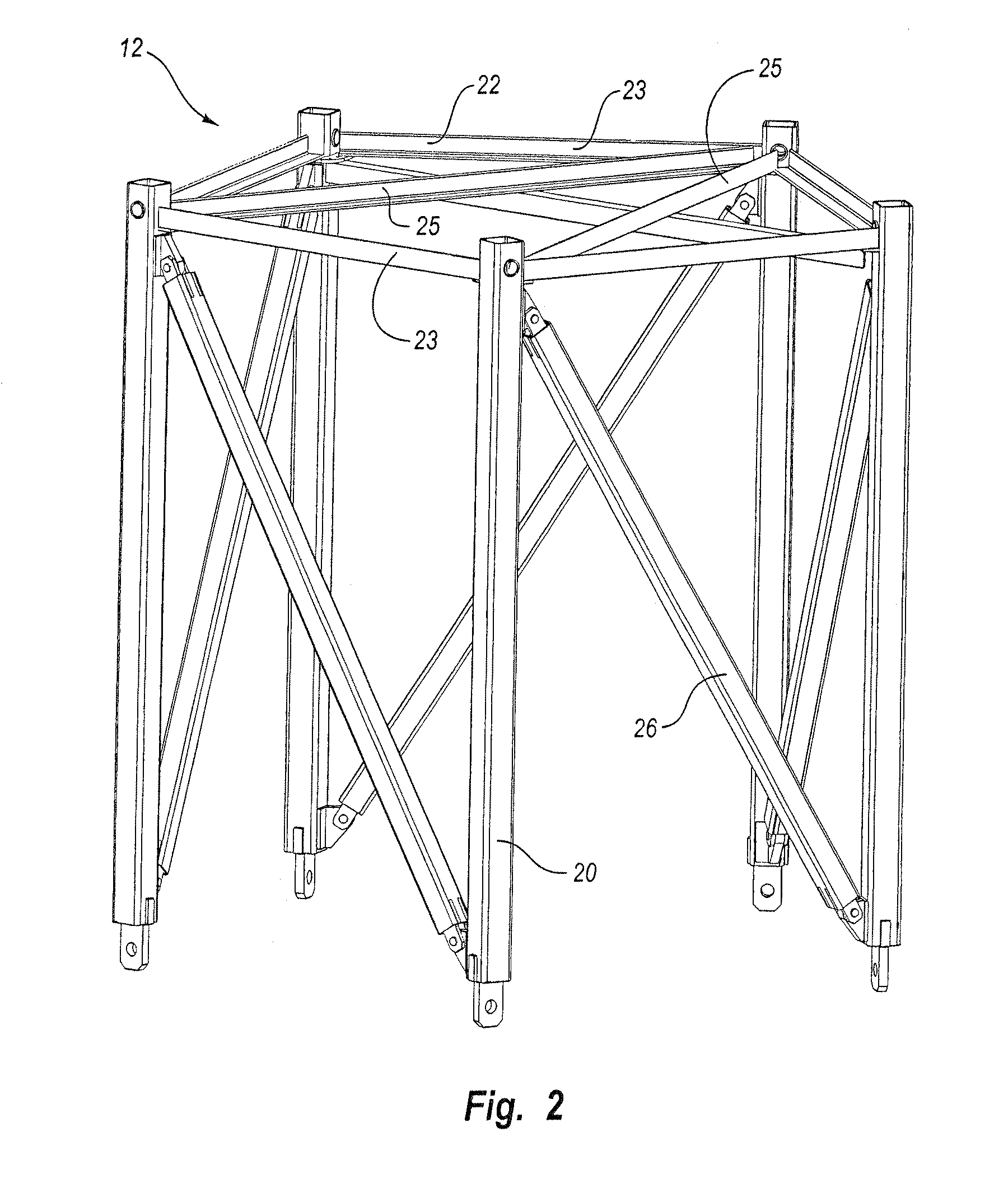Structural tower
a structure and tower technology, applied in the field of structural towers, can solve the problems of increasing the height of the turbine, the cost of the larger and more massive towers that are required to withstand the additional weight, and the equipment required to erect the wind turbine, etc., to achieve the effect of reducing the cost of the tower, increasing the power output per unit cost, and reducing the cost of energy
- Summary
- Abstract
- Description
- Claims
- Application Information
AI Technical Summary
Benefits of technology
Problems solved by technology
Method used
Image
Examples
Embodiment Construction
[0045]Generally, the present invention relates to a structural tower comprising a space frame that is suitable for heavy load and high elevation applications. In further detail, the present invention relates to a structural tower comprising a space frame and having damping members for damping resonant vibrations and other vibrations induced, for example, by normal wind turbine operation and in response to extreme wind loads. The present invention further relates to wind turbine applications, where the wind turbine is elevated to heights approaching eighty to one hundred meters or higher and where rotor diameters approach seventy meters or greater. Details of exemplary embodiments of the present invention are set forth below.
[0046]FIG. 1 illustrates a perspective view of one embodiment of a structural tower 10 of the present invention. The structural tower 10 comprises a plurality of space frame sections also commonly called bay assemblies or sections 12, 13, 19 that are assembled, o...
PUM
 Login to View More
Login to View More Abstract
Description
Claims
Application Information
 Login to View More
Login to View More - R&D
- Intellectual Property
- Life Sciences
- Materials
- Tech Scout
- Unparalleled Data Quality
- Higher Quality Content
- 60% Fewer Hallucinations
Browse by: Latest US Patents, China's latest patents, Technical Efficacy Thesaurus, Application Domain, Technology Topic, Popular Technical Reports.
© 2025 PatSnap. All rights reserved.Legal|Privacy policy|Modern Slavery Act Transparency Statement|Sitemap|About US| Contact US: help@patsnap.com



